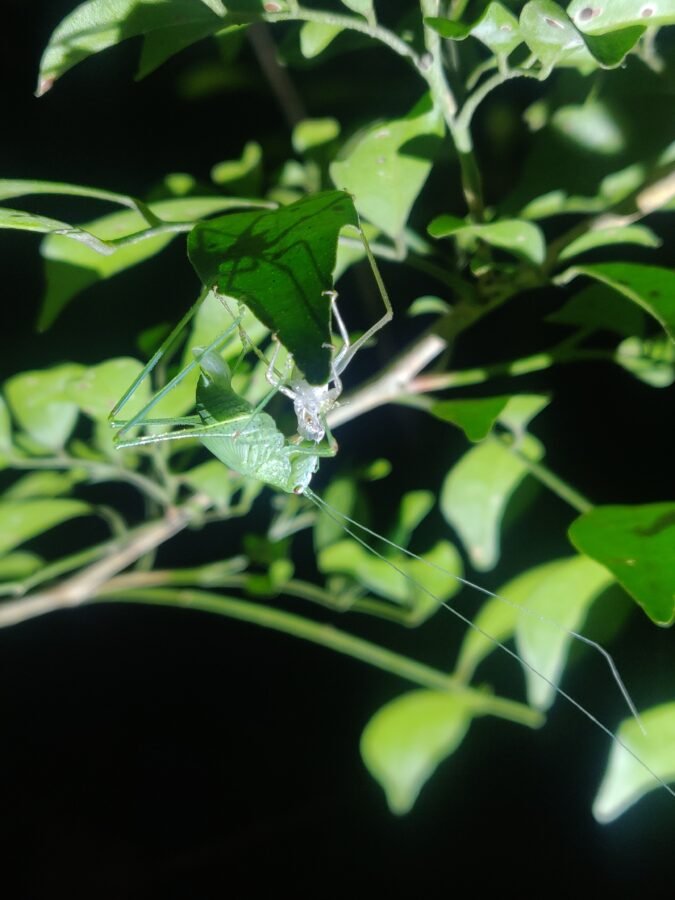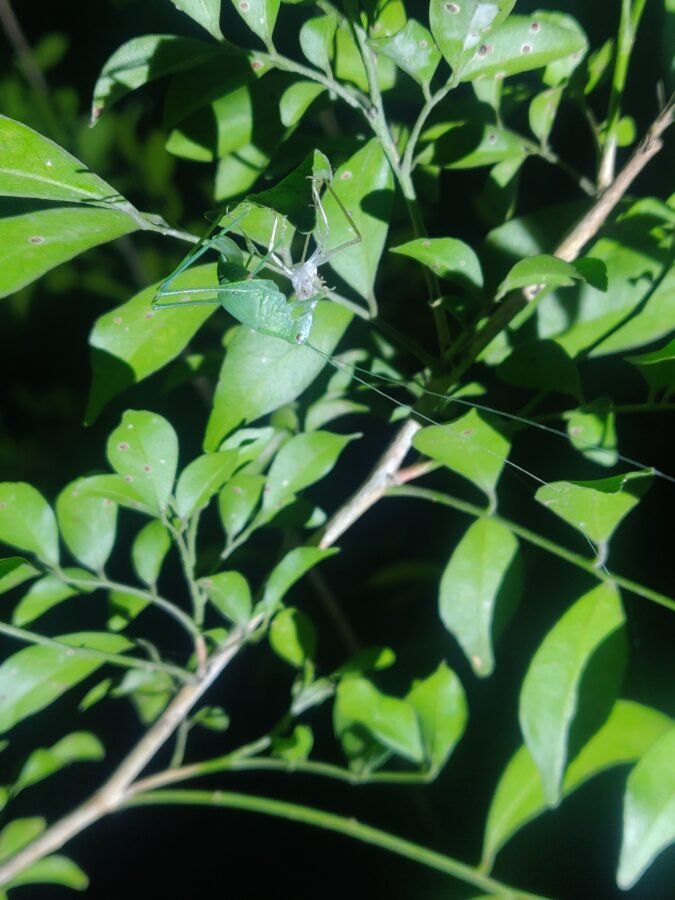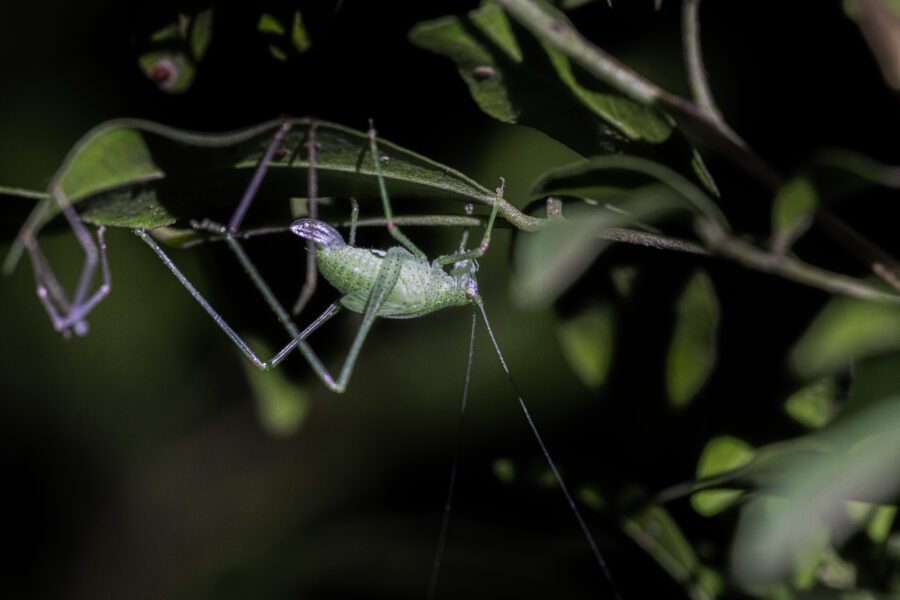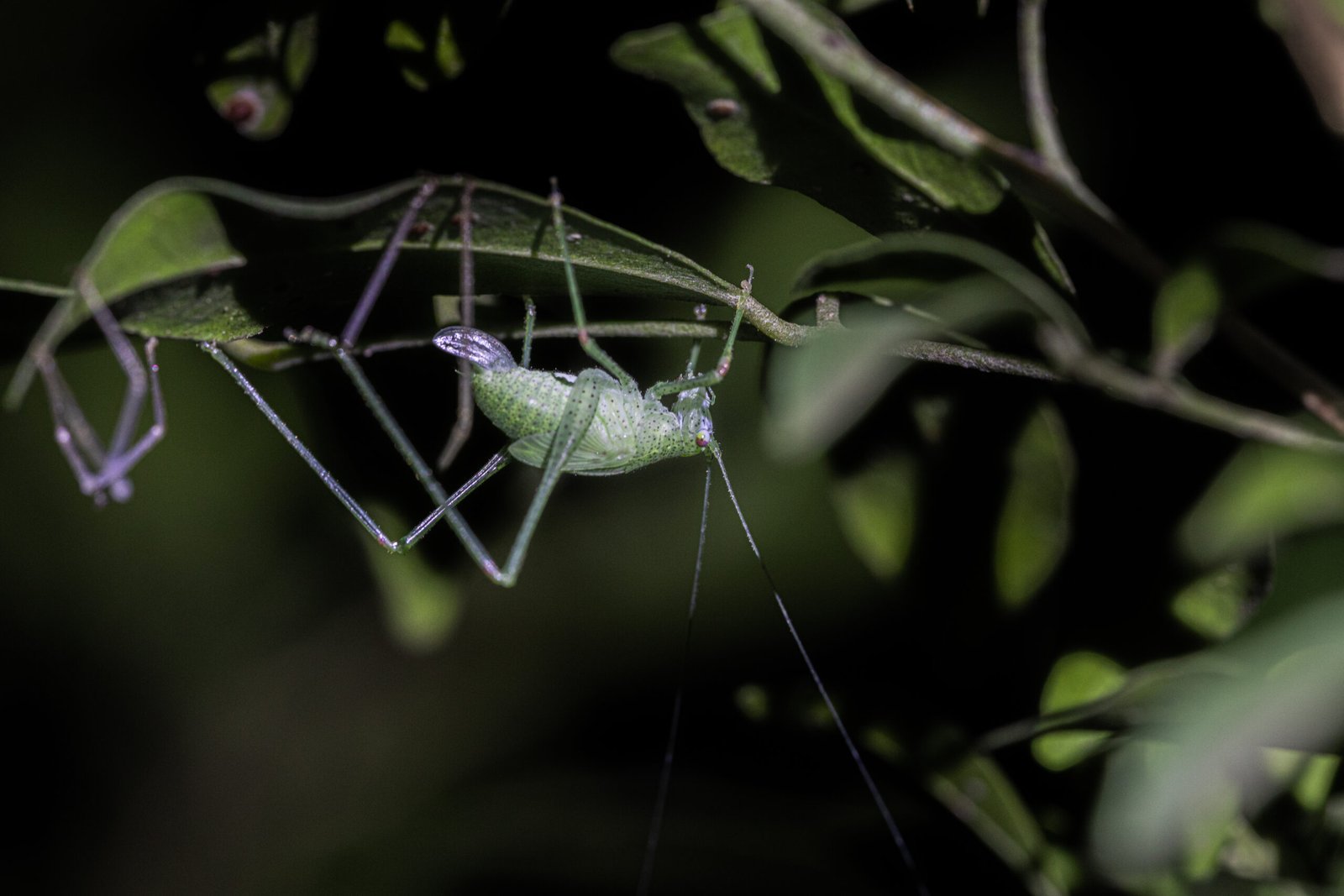After spending an hour gazing at the night sky, we started walking back to the main building. The path back to the building is a narrow trail, with bushes of Rakatbera [Murraya Paniculata] on both sides. It’s a short path and these bushes are filled with interesting insects. On our route we came across a small nest of the Weaver Ants, marching about on the outer layer. Next, we came across two very interesting spiders, an Orb Weaving Spider cleaning and redoing its web and a Leaf Curling Spider crawling inside a dried leaf in which it takes cover to be undetectable by its clueless prey. As we reached the end of the path, I noticed a green insect perched on the underside a leaf.
It was a Green Katydid!

The Green Katydid [Ducetia Japonica], belongs to the family Tettigoniidae. They have a triangular head with extremely long antennae, usually held erect in front of the head when at rest. The Prothorax is large and covers most of the thorax from the dorsal side, the wings are long and broad, which are kept folded over abdomen when at rest. They have a weak flight and in the nymphs wing buds can be seen between the thorax and the abdomen. The Abdomen is oval shaped, the females have a large ovipositor at the tip of the abdomen.

I’ve seen the Katydid before, but this time there was something different, it had a lot of spots throughout its body and it looked like it was feeding on something. As we examined it further, we realized that there was a flaky white shell-like object stuck to the underside of the leaf adjacent to the insect and it was shaped identical to the Katydid, it was the exoskeleton the of the insect. The insect emerged out of its molted skin as an adult now. The Katydids go through an incomplete metamorphosis as it transforms from its nymph stage to its adult stage. Once it emerges out of the exoskeleton and takes a new form, it needs to feed. The closest and the most nutritious option that the insect has is the molted remains, which contains protein and other nutrients that gives them sufficient energy to start their life again in a new form. We were lucky to come across it when it had just begun feeding on the exoskeleton.

This was just one of the many wonders of the night that we come across.
Ratik Sharma , Naturalist Singinawa Jungle Lodge



